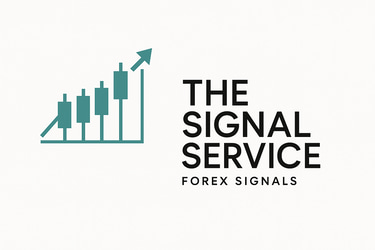The Complete Guide to Forex Risk Management: Protecting Your Capital While Maximising Profits
Risk management stands as the cornerstone of successful forex trading—yet it's the skill most traders neglect until it's too late. While the allure of quick profits draws millions to currency markets, the sobering reality is that over 80% of retail traders lose money. The difference between those who succeed and those who fail isn't intelligence, luck, or even market analysis—it's disciplined risk management.
7/25/20256 min read


This comprehensive guide reveals the proven strategies professional traders use to protect their capital while positioning themselves for long-term profitability. Whether you're a complete beginner or an experienced trader looking to refine your approach, mastering these principles will transform your trading results.
Why Risk Management Is Your Trading Foundation
The Psychology Behind Trading Losses
Most traders approach forex with a gambling mentality, focusing entirely on potential gains while ignoring potential losses. This psychological bias, known as optimism bias, causes traders to:
Risk too much capital per trade
Hold losing positions too long
Cut winning trades short
Trade without stop-losses
Increase position sizes after losses
Professional traders understand that consistent profitability comes from managing losses, not just capturing wins. The goal isn't to be right 100% of the time—it's to ensure that when you're wrong, the losses are manageable, and when you're right, the profits are substantial.
The Mathematics of Trading Success
Consider this scenario: Two traders each start with $10,000. Trader A wins 90% of trades but risks 10% per trade. Trader B wins only 40% of trades but maintains a strict 2% risk per trade with a 2:1 reward-to-risk ratio.
After 100 trades:
Trader A: Despite a high win rate, likely bankrupt after a series of losses
Trader B: Account grows to approximately $14,000
This demonstrates why risk management trumps win rate in determining long-term success.
The 1% Rule: Your Capital Protection Strategy
Understanding Position Sizing
The 1% rule forms the foundation of professional risk management. This means never risking more than 1% of your total account balance on any single trade. For a $10,000 account, maximum risk per trade equals $100.
Here's how to calculate proper position size:
Position Size = (Account Balance × Risk Percentage) ÷ (Entry Price - Stop Loss Price)
Example Calculation
Account Balance: $10,000
Risk Tolerance: 1% ($100)
EUR/USD Entry: 1.1000
Stop Loss: 1.0950
Risk per pip: 50 pips
Position Size = $100 ÷ (50 pips × $10 per pip) = 0.2 lots
Scaling Your Risk
As your account grows, maintain percentage-based risk rather than fixed dollar amounts:
Advanced Stop-Loss Strategies
Types of Stop-Losses
1. Fixed Pip Stop-Loss
Set at a predetermined distance from the entry
Simple but ignores market structure
Best for scalping strategies
2. Technical Stop-Loss
Based on support/resistance levels
Adapts to market conditions
More logical price placement
3. Volatility-Based Stop-Loss
Uses Average True Range (ATR)
Adjusts for market volatility
Prevents premature exits in volatile
markets
4. Trailing Stop-Loss
Moves with favourable price action
Locks in profits while allowing upside
Requires careful parameter setting
Stop-Loss Placement Best Practices
Never move stops against your position
Place stops beyond significant technical levels
Allow for market noise and spread
Consider daily/weekly support and resistance
Factor in upcoming news events
Avoid the common mistake of setting stops at round numbers where other traders cluster their orders, increasing the likelihood of premature execution.
Take-Profit Strategies That Work
The Reward-to-Risk Ratio
Successful traders maintain a minimum 2:1 reward-to-risk ratio. This means if you risk $100, you should target at least $200 profit. This ratio allows profitability even with 40% win rates.
Multiple Take-Profit Levels
Professional traders often scale out of positions:
Example EUR/USD Long Position:
Entry: 1.1000
Stop Loss: 1.0950 (50 pip risk)
TP1: 1.1050 (50 pips) - Close 25% of position
TP2: 1.1100 (100 pips) - Close 50% of position
TP3: 1.1150 (150 pips) - Close remaining 25%
This approach captures profits while allowing for extended moves.
Technical Take-Profit Levels
Base profit targets on:
Previous swing highs/lows
Fibonacci retracement levels
Key psychological levels
Daily/weekly pivot points
Trend line intersections
Portfolio Risk Management
Correlation Risk
Trading multiple correlated pairs simultaneously multiplies risk. For example, going long on both EUR/USD and GBP/USD effectively doubles your USD exposure since both pairs typically move together.
Major Currency Correlations:
EUR/USD and GBP/USD: Strong positive correlation
USD/JPY and USD/CHF: Moderate positive correlation
EUR/USD and USD/CHF: Strong negative correlation
AUD/USD and NZD/USD: Very strong positive correlation
Maximum Portfolio Risk
Limit total portfolio risk to 3-5% of account balance across all open positions. This prevents devastating losses during major market moves that affect multiple positions simultaneously.
Diversification Strategies
Trade different currency groups (majors, minors, exotics)
Various timeframes (short-term scalps, medium-term swings)
Use different analysis methods (technical, fundamental)
Avoid overconcentration in a single currency
Psychology and Emotional Control
The Fear and Greed Cycle
Understanding emotional states helps maintain discipline:
Fear-Based Decisions:
Closing winning trades too early
Avoiding entries after losses
Reducing position sizes arbitrarily
Second-guessing valid signals
Greed-Based Decisions:
Increasing position sizes after wins
Holding losing trades, hoping for recovery
Ignoring stop-losses
Over-trading good setups
For traders struggling with emotional decision-making, leveraging professional signals can provide objective, emotion-free trade management. Learn more about removing emotional bias in our guide on Common Forex Trading Mistakes and How to Avoid Them.
Building Mental Discipline
Pre-Trade Planning:
Define entry, stop-loss, and take-profit before entering
Calculate position size in advance
Set maximum daily/weekly loss limits
Write down the trade rationale
Post-Trade Review:
Record what worked and what didn't
Analyse the emotional state during the trade
Identify areas for improvement
Celebrate disciplined execution, not just profits
News and Event Risk Management
Economic Calendar Awareness
Major news events can cause extreme volatility that invalidates technical analysis. Key events include:
Central bank interest rate decisions
Non-Farm Payrolls (NFP)
Consumer Price Index (CPI)
Gross Domestic Product (GDP)
Political elections and referendums
Pre-Event Risk Mitigation
Hours Before Major News:
Reduce position sizes by 50%
Tighten stop-losses
Avoid new entries 30 minutes before release
Consider closing positions entirely for high-impact events
Post-Event Strategy:
Wait for initial volatility to settle
Look for technical levels to hold
Use smaller position sizes until normal volatility returns
Understanding how different market conditions affect currency behaviour is crucial for effective risk management. Our comprehensive analysis of Understanding Currency Pairs and Market Correlations provides deeper insights into these relationships
.
Technology and Risk Management Tools
Platform-Based Risk Controls
Modern trading platforms offer automated risk management features:
MetaTrader Risk Settings:
Maximum spread limits
Maximum slippage tolerance
One-click trading with predefined risk
Expert advisors for automated stop management
Position Management Scripts:
Automatic position sizing calculators
Break-even automation after profit targets
Trailing stop algorithms
Multi-timeframe stop adjustments
Risk Management Apps and Tools
Position Size Calculators:
MyFXBook Position Size Calculator
BabyPips Position Size Calculator
Custom Excel spreadsheets
Mobile apps for quick calculations
Portfolio Analysis Tools:
FX Blue trade analyser
MetaTrader trade statistics
Risk-reward ratio calculators
Correlation monitors
Building Your Risk Management Plan
Step 1: Define Your Risk Tolerance
Conservative Approach (0.5-1% risk per trade):
Suitable for beginners
Preserves capital during the learning phase
Slower account growth but higher survival rate
Moderate Approach (1-2% risk per trade):
Balanced growth and protection
Suitable for experienced traders
Allows for reasonable profit potential
Aggressive Approach (2-3% risk per trade):
Higher profit potential
Requires extensive experience
Only for consistently profitable traders
Step 2: Create Your Trading Rules
Entry Rules:
Minimum reward-to-risk ratio (suggest 2:1)
Required technical confirmations
Market condition filters
Maximum positions per day/week
Exit Rules:
Stop-loss placement methodology
Take-profit scaling strategy
Break-even rules
Maximum holding periods
Money Management Rules:
Daily maximum loss limits
Weekly drawdown limits
Position sizing formulas
Portfolio correlation limits
Step 3: Implement and Monitor
Daily Routine:
Review the economic calendar
Calculate position sizes before trading
Set all stop-losses immediately after entry
Record all trades with reasoning
Weekly Review:
Analyse win/loss ratios
Review the largest wins and losses
Assess emotional state during trades
Adjust rules if necessary
Monthly Assessment:
Calculate the overall return and maximum drawdown
Review adherence to risk rules
Identify patterns in profitable trades
Plan improvements for the following month
Advanced Risk Management Concepts
Value at Risk (VaR)
VaR calculates the maximum expected loss over a specific period with a given confidence level. For example, a daily VaR of $500 with 95% confidence means there's only a 5% chance of losing more than $500 in one day.
Kelly Criterion for Position Sizing
The Kelly formula determines optimal position sizing based on win rate and average win/loss ratio:
Kelly % = (Win Rate × Average Win) - ((1 - Win Rate) × Average Loss) / Average Win
However, most traders use fractional Kelly (25-50% of the calculated amount) to reduce volatility.
Monte Carlo Simulation
This statistical method models thousands of potential trading scenarios to understand:
Maximum potential drawdown periods
Probability of reaching profit targets
Risk of account ruin
Optimal position sizing for long-term growth
Common Risk Management Mistakes to Avoid
The "Just This Once" Mentality
Breaking risk rules "just once" for a "sure thing" trade often leads to account devastation. Professional traders follow their rules religiously, understanding that no single trade is worth risking their career.
Revenge Trading
After a loss, many traders increase position sizes to "get even quickly." This emotional response typically leads to larger losses and potential account ruin.
Position Size Creep
Gradually increasing position sizes without corresponding account growth violates percentage-based risk management and increases overall portfolio risk.
Ignoring Correlation
Taking multiple positions in correlated instruments effectively concentrates risk, even if individual position sizes appear reasonable.
Conclusion: Your Path to Trading Longevity
Successful forex trading isn't about finding the perfect strategy or predicting every market move—it's about implementing robust risk management that allows you to survive inevitable losses while capitalising on profitable opportunities. The traders who consistently profit over years and decades are those who prioritise capital preservation above all else.
Remember these key principles:
Never risk more than 1-2% per trade
Maintain minimum 2:1 reward-to-risk ratios
Always use stop-losses without exception
Limit total portfolio risk to 3-5%
Plan every trade before execution
Review and adjust rules regularly
Risk management transforms trading from gambling into a business. By implementing these strategies consistently, you position yourself among the small percentage of traders who achieve long-term profitability.
Ready to implement professional-grade risk management with expert guidance? Consider our 14-day free trial, where you'll receive trade signals that incorporate these proven risk management principles, helping you develop disciplined trading habits while learning from experienced professionals.
Remember: protecting your capital isn't just about avoiding losses—it's about ensuring you'll be around to capture the profits when they come.


Trading
Expert forex signals for profitable trading strategies.
Disclaimer:
Trading forex involves significant risk and may not be suitable for all investors. Past performance is not indicative of future results. The information and signals provided on this website are for educational purposes only and should not be considered financial advice. You are solely responsible for your trading decisions and any resulting financial losses. Please consult with a licensed financial advisor before engaging in forex trading.
© 2025. All rights reserved.
